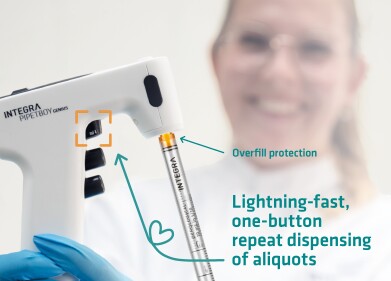Pipettes
A Brief History of Pipettes and Liquid Handling
Jan 16 2022
Off all the instruments used in modern laboratories, pipettes and liquid handling systems are among the most important. From drug development laboratories operated by pharmaceutical giants such as Pfizer and Roche to food testing, analysis and safety labs designed to keep consumers safe, pipettes are used across a wide range of industries and applications.
Below, we take a closer look at the history of pipettes and liquid handling systems, and how the technologies have changes over time.
Louis Pasteur invents the first pipettes
French chemist and microbiologist Louis Pasteur (1822-1895) is widely credited with inventing the first pipettes. Pasteur is often referred to as the ‘father of medical microbiology’ and dedicated much of his career to the study of typhoid. As well as inventing the famous ‘pasteurisation’ method to eliminate pathogens in milk and other edible goods, Pasteur developed glass pipettes to transfer liquids in his laboratory. These handheld tools helped to prevent contamination and simplify the liquid transfer process.
German physician Heinrich Schnitger develops the micropipette
In the 1950s, German physician Heinrich Schnitger engineered the first micropipette prototype. Schnitger built on Pasteur’s idea and added a spring-loaded piston and removable plastic tip to his pipettes. This allowed operators to accurately aspirate and dispense extremely small volumes of liquid.
Eppendorf begins mass production of pipettes
German-based biotech company Eppendorf purchased the rights to the micropipette in the 1960s and began mass production. This drastically reduced the cost of the laboratory tools and made micropipettes available to laboratories around the world.
US scientists invent the adjustable micropipette
The 1970s saw pipettes advance even further, with Wisconsin scientists Warren Gilson and Henry Lardy inventing the adjustable micropipette. The new technology offered operators the freedom to adjust volumes.
Modern pipetting systems
21st century technology has reimagined the limits of pipettes, with scientists now utilising advanced and automated models like the Bluetooth-enabled Gilson Single Channel PIPETMAN M, Oxford Benchmate E Electronic Pipette and Rainin Electronic E4 XLS Adjustable Spacer Multichannel Pipette. The Eppendorf Research plus single-channel pipette range is one of the first to receive the seal of approval from My Green Lab, a non-profit group committed to sustainability in science.
What’s next for pipettes?
Pipettes have become indispensable to the scientific sector, with a recent report predicting the global market for disposable pipette tips will climb to more than US$166 million by 2028. This represents a CAGR growth rate of 9.5%, with the trend largely fuelled by demand for COVID-19 tests.
Want to know more about pipettes and how they’re used to improve laboratory workflows? Don’t miss ‘Liquid Handling - What, Why & How?’
Digital Edition
Lab Asia 32.1 Feb 2025
February 2025
Chromatography Articles - Comparing volumetric and thermal flowmeters for assessing and validating liquid chromatography performance Mass Spectrometry & Spectroscopy Articles - The importa...
View all digital editions
Events
SPS Smart Production Solutions Guangzhou
Feb 25 2025 Guanghzou, China
Feb 25 2025 Amsterdam, Netherlands
Feb 27 2025 Kathmandu, Nepal
Mar 01 2025 Boston, MA, USA
Mar 02 2025 Bethesda, MD, USA




















